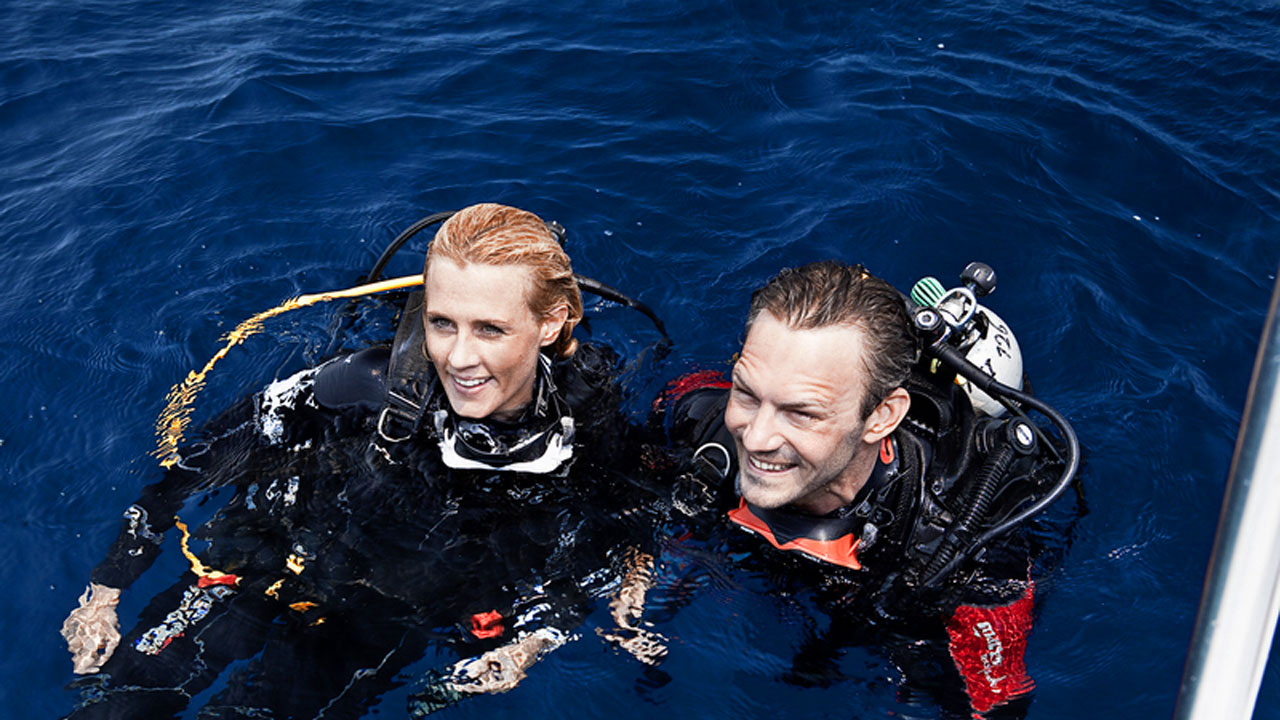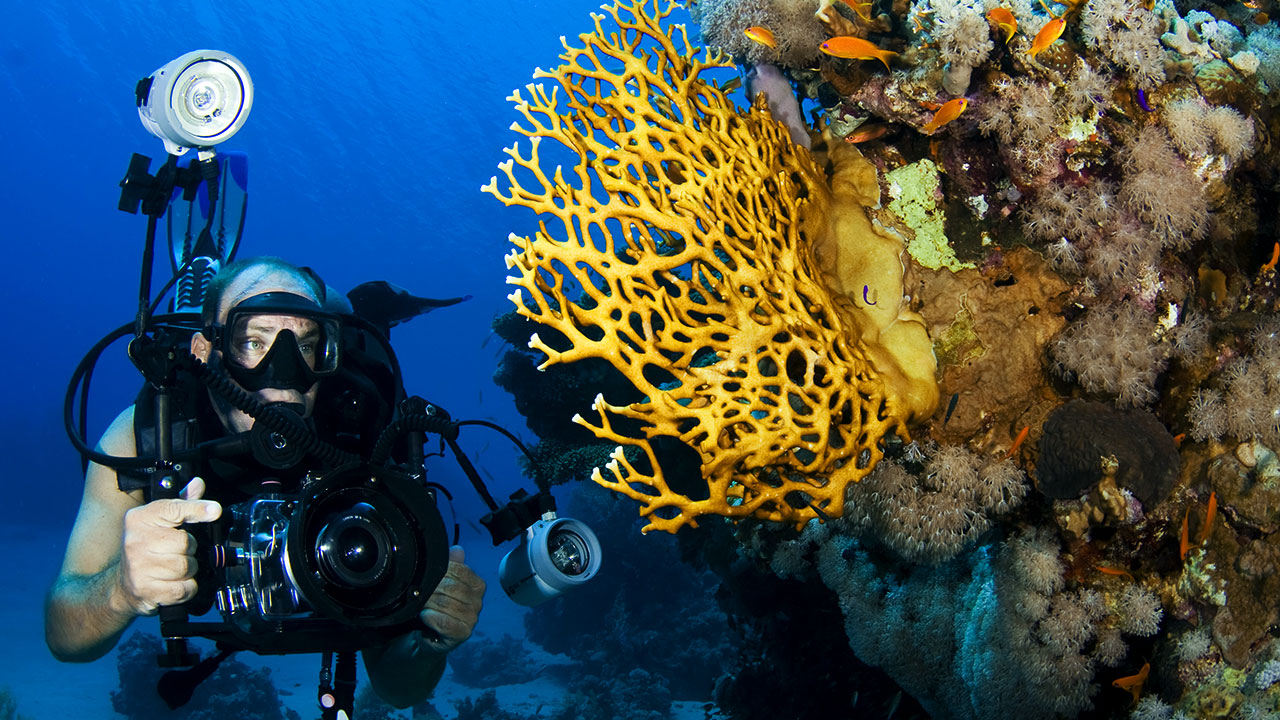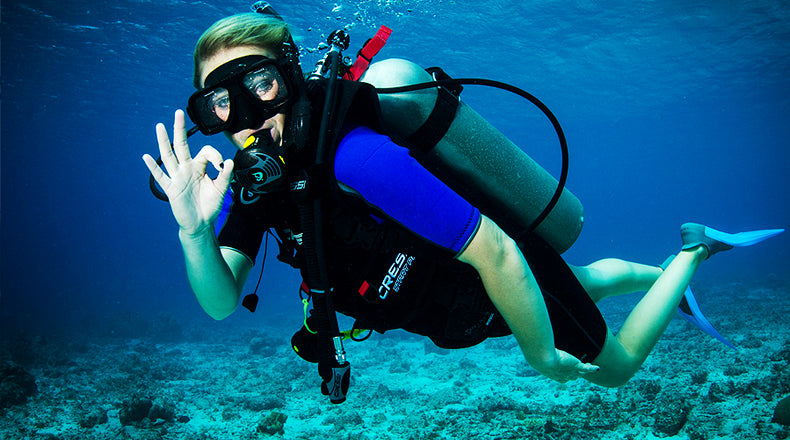How to Be a Good Dive Buddy

Scuba diving goes hand in hand with a buddy system and we won’t be the first to tell you about its importance; however, with such a crucial topic as this one, repetition is more than necessary. For beginners, having a buddy on a dive is a must. That being said, even if you are a professional diver, a good buddy can literally be a life-saver in some situations. So, let’s look at why the buddy system is so important, how to find a good buddy, and how to become a better buddy yourself.
What Is the Buddy System and Why It’s Important
The “buddy” part of this term is self-explanatory - you dive with a partner, a mate. But why is it called the system? Because it consists of many components and interconnected processes and therefore, is not as simple as it may look at a first glance. Apart from finding a good buddy, which is not always easy in itself, you both must decide and agree on the dive plan, your communication underwater, and emergency procedures. The next challenge is to actually stick to the agreed course of action after you submerge. At its best, the buddy system is based on mutual trust and responsibility.
In this regard, it is imperative that novice divers always dive with a partner and never exceed the limits of their training, which does not provide for solo diving. If you are particularly keen to dive alone, you should consider undergoing specialized training, where you will learn all the technical peculiarities and safety precautions and become a certified solo diver. Without this extra training and a good portion of diving experience under your belt, you should always adhere to the buddy system.
While scuba diving there is always of course the possibility of unforeseen events that, as noted above, can be easily evaded or resolved with a reliable buddy at your side. For instance, you can get entangled, anxious, lost, or you can run out of air. While you should always remember that you are responsible for your safety, a good buddy will lend a helping hand when you need it most. In addition to safety reasons, buddy diving provides an opportunity to learn from each other and to grow faster together. It is also always more fun if you have someone to share the beautiful experience of marine life exploration with. Last but not least, you’ve got a chance to make a life-long friend out of your regular dive buddy, whom you will always associate with the incredible memories of your underwater adventures.
How to Find a Good Buddy
In order to find a good buddy, you need to know what you are looking for. In other words, it’s important to define the main qualities and characteristics of a person who will make a perfect diving partner for you. Certainly, each case is different, yet, we’ve come up with a set of generic guidelines that will give you something to start with.
- First of all, it is recommended to buddy up with a diver whose level of experience matches yours so that you can complement each other. If, for instance, your buddy’s depth limits are way ahead of yours, now and then you may feel that you are pushed out of your comfort zone. Or the other way around, your grip on the air consumption may be much stronger than that of your partner’s, which may annoy you each time you’re forced to finish the dive with a half-full tank. Therefore, the levels of expertise and knowledge in a buddy pair should be closely matched.
- Secondly, it’s good if you share the same interests and dive goals. In case you are an underwater photographer, it’s better to find a buddy with the same interest. For example, buddy up with a diver who likes to observe and moves slowly. Another underwater photographer would be a great fit for you too. But you should always remember your main responsibility as a buddy during the dive. A person with other interests will hate you for stopping so frequently and breaking the dive pace, to take another shot.
- Another general piece of advice is to look for a person with a positive and calm attitude. If your potential buddy displays an interest in you and your upcoming mutual dive, discussing your plan and safety measures along the way, it should be a good indication that this person takes the whole thing seriously and will behave rationally underwater. Moreover, a calm demeanor on the surface hints that he or she is less likely to panic in a stressful situation underwater.
- On top of that, you do not want to put so much effort into finding a good buddy just for one dive knowing you’ll have to do the same for your next dive. The more you dive together, the better buddy pair you become. Over time, you’ll learn each other’s strengths and weaknesses, trust and understanding will grow between you. With a regular buddy, you’ll also spend more time diving instead of getting to know each other. Therefore, you should be looking for someone with a prospect of a long-term connection. The best way to find such a person is at your local dive center.
What should you do though if during your training you get paired with a complete stranger (what some call a “shotgun wedding”)? When that happens, you should talk and get to know each other as divers first. Share your experiences, clarify objectives for the dive, agree upon key aspects of your communication, etc. Keeping all this in mind, already your first conversation will give you a good overall impression of whether this person is suitable for you as a buddy or not.
How to Become a Better Buddy
Now that you understand how important it is to dive with a buddy and how to find one, it is worth thinking about how you can become a better buddy yourself and what both of you should do to be a good buddy pair.
Plan together. Above all, you would want to create a dive plan together and go through it one more time before the plunge. Agree upon the maximum depth you want to achieve and the duration of the dive. Warn about any of your diving peculiarities and find out about your buddys’ at the beginning. For example, if you have sensitive ears and need a slower descent. Read more on how to plan a dive in a dedicated blog post.
Buddy check. This part is often overlooked by divers, but it is a very important step in the buddy system protocol and you should always follow it with no exceptions. No matter how confident you are that your equipment is fine, you and your buddy should always check each other’s gear before the dive. Make sure that everything works properly and you are both ready for the dive. This type of responsible attention towards each other is another key step in building strong and trustful collaboration.
Positioning. The best formation underwater is swimming side-by-side. In this way, both of you will have a good view of what is in front. Moreover, the chance of separation is meager. This setup makes communication between you much easier. However, if you plan to dive in a narrow environment, like a cave, side-by-side swimming will not work out, so you’ll need to use a leader-follower setup. Thus, it is very wise to determine beforehand who will be the leader and who will be the follower. It’s better when a less experienced diver goes first. Therefore, the more advanced buddy will be able to notice the first signs in case any trouble occurs and the less skilled one certainly won’t lag behind. A person who has recently bought a new computer or another gear should also go first as he or she is more likely to be distracted. You can always agree on changing positions in the middle of the dive if your knowledge and experience comparatively coincide.
Communication. Clear and instant communication underwater isn’t something that comes by default, but something that incrementally builds up with a regular buddy. Ideally, you should understand not just hand signs, but also facial expressions, gestures, as well as signals coming through eye contact. For a start though, you should agree on the basic signs you will use, and the rest will come with practice. In case you are planning a dive in low-light conditions, check out this article with a few alternative methods of communication underwater.
Stay close to each other. Of course, you must not swim with your shoulders touching. Instead, give each other some space to move freely, but keep in mind that generally, it should not take more than 2 seconds to swim back to your buddy in case of need. Consequently, staying close allows you to check on your buddy routinely, giving you some personal space at the same time.
Be ready for emergencies. Before the dive, you should thoroughly talk through and establish a strict separation protocol on the off chance that you do lose each other somehow (and this happens quite often, unfortunately). Rule of thumb - if you lost your buddy, search for him or her for one minute. If you still do not find him or her, you should ascend and report the case to the boat team.
As a final point, all these preparations are of no use if you do not stick to the plan. Never forget that you are a team and your main objective is each other’s safety. Follow the protocols, respect the agreements, share your feedback with each other, grow together, and you will enjoy all the merits of a well-considered buddy system.




